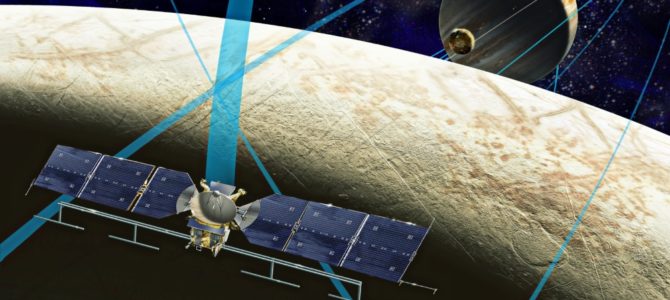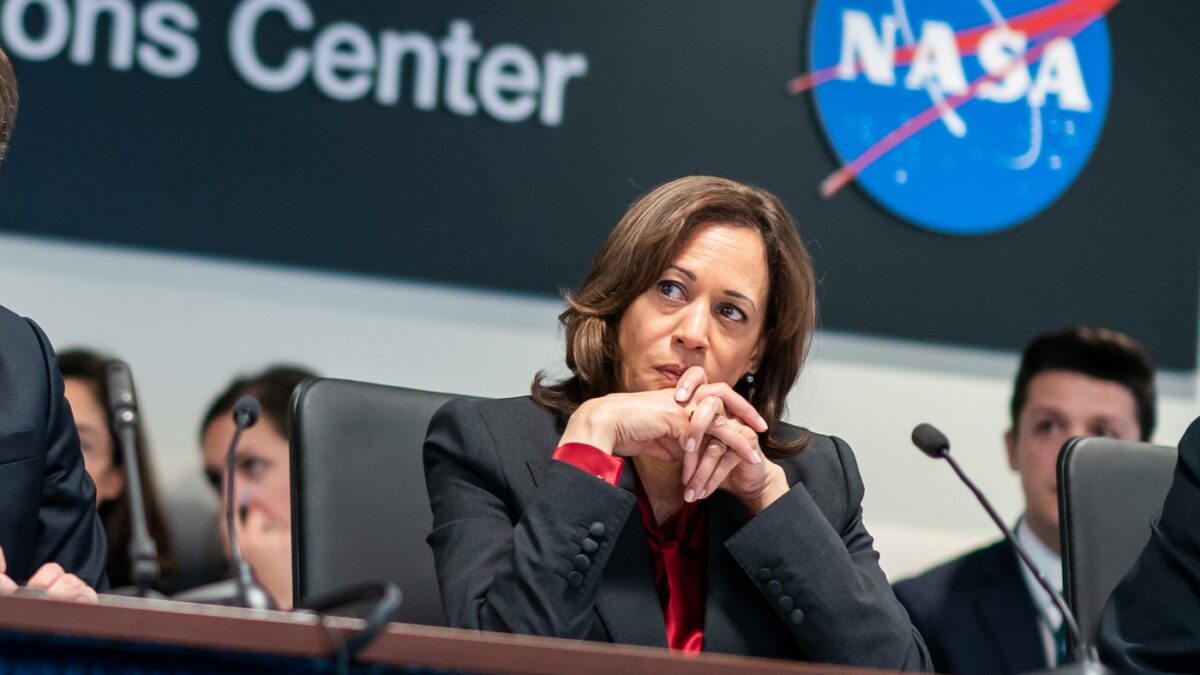
Its frozen shell is encrusted with a layer of white and orange ice. The endless twisting and pulling of Jupiter’s gravity leaves a surface crisscrossed by deep valleys, ridges, and not yet fully understood “chaos zones” of deep tectonic activity. Its immense dark oceans, heated by underwater volcanoes, are hidden by this icy surface — that is, except for when it explodes outwards in titanic geysers, shooting plumes of liquid water hundreds of miles into space.
No, this isn’t science fiction — this is Europa, the hauntingly beautiful yet bizarre ocean moon of Jupiter. Scientists have called Europa “the most likely place to find extraterrestrial life in our solar systems.” As such, it is the target of one of NASA’s most exciting upcoming missions; a mission now one step closer to happening thanks to privatization.
Enter the Clipper
The Europa Clipper, named after the 19th century sailing ships, is set to journey to this ocean world within the next three years. The nimble spacecraft will be launched into orbit around Jupiter and make nearly 50 close flybys of the moon.
On each of these trips, spectrometers, cameras, and radar will be used to scour the moon’s surface, peer beneath its icy shell, and even “taste” the geysers to find out what’s in the oceans.
The mission is critical for three reasons. One, it will tell us what’s inside Europa’s planet-wide ocean. Two, it’ll assess the moon’s habitability, and whether its seas can harbor life. Three, it will identify high-interest areas on the surface, such as geyser locations and “chaos zones.”
All of these will be crucial for the eventual exploration of the ocean moon. So far, the mission is looking good. The Clipper is all but finished, with its instruments entering the final stages of development.
There’s only one problem: today, it’s illegal for it to be taken to space via any existing launch vehicle. The Europa Clipper has been dosed with a poison pill of pork which has endangered the entire mission.
Politics as (Unfortunately) Usual
While a swelling trend of privatization is sweeping space exploration and leading to billions in savings, the Clipper has been legally forbidden from being launched on a private rocket. Quietly slipped into page 129 of a bloated omnibus spending bill from 2016 is a legal requirement that the Clipper can only take to space if it is on the Space Launch System.
The Space Launch System, or SLS, is a $28 billion government rocket program intended to replace the extinct shuttle program. It’s now billions over budget, and after nearly a decade of development still only exists in the imaginations of artists and politicians.
No other NASA mission in history has been forbidden by force of law from using a private rocket. The negative consequences of this law, however, are immense.

According to a recently released inspector general’s report, the SLS is unlikely to be ready for the Clipper even as late as 2025. Even this optimistic timeline would delay the Clipper’s launch by two years, costing $200 million to safely store the sensitive instruments — assuming such a feat is possible. If it is ever completed, using the SLS will cost $2 billion to launch.
In sharp contrast, a SpaceX Falcon Heavy (tapped by the IG as a potential replacement) has already been built and costs just $90 million to use. Why then, would the SLS ever be legally required to buy federal? The answer lies in pork. In an extraordinary statement last year, former Rep. John Culberson (R-Texas) confirmed that the SLS mandate was created to gain the support of Sen. Richard Shelby (R-Ala.), the chairman of the Senate Appropriations Committee.
Shelby is an ardent apostle of the SLS — which just so happens to be built in his state. By shackling the Clipper to the creation of another $2 billion pork barbeque, Culberson was able to ensure the critical mission a future, at a heavy scientific and financial cost. But within the halls of Congress and the highest levels of the private space industry, resistance is growing to the questionable rule — and it may save the mission to Europa.
A New Plan, A New Hope
Following the IG’s report, the U.S. House of Representatives began an internal push to break the law holding the Clipper on Earth. Details obtained from Rep. Steven Palazzo (R-Miss.), who sits on the House Committee of Appropriations, confirmed a bipartisan push to end the restriction, and revealed a philosophy through which American space exploration can continue.
“I believe some of America’s greatest accomplishments have been made by private space companies,” the representative said in a statement to The Federalist. “Increasing privatization of space exploration allows NASA the chance to focus on the science of outer space while the expertise of the launch is left in the hands of those who are focused on launch execution.”
This internal effort appears to have recently come to fruition. Inside the now-passed House appropriations, the 2020 spending bill was a critical provision unshackling the Europa mission from the SLS, which allowed NASA to use other options if the government project fails to deliver. Seeing as the SLS almost certainly won’t arrive on time, this provision will essence private the Clipper’s launch, solving the financial and practical issues stemming from the law.

Two hurdles remain, however, in the quest to ensure the Clipper’s future — one scientific and one political.
Flying a private rocket to Jupiter would be the farthest and most risky privatized mission ever accomplished. NASA estimates using a Falcon Heavy would require a journey of more than five years. According to the executive of the Europa Clipper program, it may also require a dangerous passage through the volatile Venus system, in addition to surviving the harsh radiation emanating from Jupiter.
Yet a statement to The Federalist from Tommy Sanford, the executive director of the Commercial Spaceflight Federation, argues that private industry is more than ready to take up the challenge if given the opportunity.
“Commercial spaceflight companies have been leading the world in launching planetary science missions for more than two decades in partnership with NASA’s Launch Services Program, and there are a number of commercial launch vehicles that could compete for this launch,” Sanford said. “Utilizing commercial launch vehicles could save nearly $1 billion, which can be reinvested into future science and exploration missions. We look forward to working with the Congress to approve this launch flexibility for NASA.”
The Commercial Spaceflight Federation represents more than 60 private companies in the field, including SpaceX, Virgin Galactic, and Blue Origin. But while private companies may be confident in their capabilities, another treacherous river must be crossed before this solution becomes a reality: The Senate.

None of the numerous Appropriations Committee senators contacted for this story chose to give their position on the privatization. With Shelby still manning the committee helm, it’ll take considerable pressure to make it happen. Although Palazzo offered some hope, he notes it will take some time before the Senate offers any final answers.
“I know they are working on keeping the promises we’ve made to the American people,” Palazzo assures, “and I am looking forward to holding discussions on this topic in the very near future.”
In the coming months, one way or another, the Europa standoff will end, and America will hopefully once again harness the titanic energy of one of the most powerful rockets ever built. Whether the conclusion will be an oft-bungled rocked laced with pork pie or a Falcon Heavy remains to be seen.
This article has been edited since publication.









